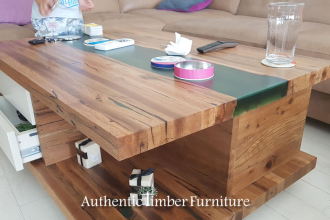As roofs age and weather conditions take their toll, repairing roof shingles is a common necessity for homeowners. Shingles can become damaged due to high winds, falling branches, or heavy rains, leading to leaks and other issues if not addressed promptly.
Understanding how to perform basic repairs can save you money and help maintain the integrity of your home. The following guide outlines the steps to take for effective shingle repair so that your roof stays in good condition for years to come.

Know When to Call a Professional
Many homeowners can manage minor shingle repairs, but some situations require professional intervention. If your roof shows extensive damage or if repairs seem too complex, hire a qualified roofing contractor. A professional will have the experience necessary to handle a variety of roofing issues and can ensure that repairs meet local building codes.
If you notice signs of structural integrity issues (sagging or leaks inside the home), you want to consult a professional. They can assess potential roof damage in Avon—for those in the area—and provide solutions that might not be apparent to the untrained eye. Hiring a skilled roofing professional means peace of mind, knowing that your repair will withstand future weather challenges.
Identify Shingle Damage
Before proceeding with repairs, recognize the extent of shingle damage. Common signs include curling, cracks, missing pieces, or granule loss. Curling indicates that the shingles are aging and may not provide adequate protection against moisture. Cracked shingles can allow water to infiltrate, resulting in mold and structural issues. Missing shingles are concerning as they expose the underlying roof layers.
Granule loss can reduce the lifespan of the shingles since these granules can help with UV protection. Regular inspections can help you catch these issues early. Document the condition of your roof with photos, which can be beneficial when consulting professionals for more extensive repairs.
Gather Necessary Tools and Materials
Once you’ve identified damaged shingles, the next step is to gather the right tools and materials for repair. Essential items include a pry bar, roofing nails, a hammer, and replacement shingles. Depending on your roof’s design, you may also need roofing cement and a utility knife. Opt for shingles that match your existing roof as closely as possible in terms of color and material. If you are unsure about matching shingles, many local suppliers can assist.
Have safety gear like gloves and safety goggles to protect yourself during the repair process. Use a sturdy ladder to safely access the roof, and enlist a friend’s help if you’re not comfortable working alone or at heights. An organized space minimizes mishaps and shows that you’re well-prepared.
Prepare the Roof for Repair
Before you begin the actual repair, you need to be prepared. Clear away any debris from the roof surface, as leaves, branches, or dirt can interfere with your work. Clean the area around the damaged shingles for a secure bond with the new material. If the shingles are severely damaged, you may need to remove them entirely. Use a pry bar to gently lift the damaged shingles, working from the bottom up to avoid causing further damage to adjacent shingles.
After removing the damaged sections, check the felt underlayment for leaks or dampness. If the underlayment shows signs of damage, it may require repair or replacement before you can proceed. New shingles will need to adhere correctly so that your roof remains leak-free.
Install Replacement Shingles
When installing replacement shingles, follow the manufacturer’s guidelines carefully for effective coverage and longevity. Place the new shingle in line with the existing ones in a way that it overlaps the ones below it sufficiently. Nail down the shingles using two to four roofing nails, depending on the type of shingle.
Position the nails just above the adhesive strip so that they are flush with the surface to avoid any protrusions that could lead to future leaks. After nailing, apply roofing cement for additional sealing at the seams and edges. This step prevents water penetration and extends the life of the new shingles. Closely examine each installed shingle to make sure it sits flat against the roof, as any raised edges can create points where water may infiltrate.
Long-Term Roof Maintenance
After carrying out repairs, establish a long-term maintenance routine to extend the life of your roof. Conduct regular visual inspections at least twice a year and after significant storms. Look for loose shingles, rust on flashings, or mold growth. Clean your gutters and downspouts to prevent water from pooling on the roof, which can cause more shingle damage over time. Keep nearby trees trimmed to minimize debris accumulation and the risk of branches damaging the roof.
Another useful strategy is to apply a roof sealant, which can protect and prolong the lifespan of your shingles. Educate yourself about your roof’s needs and maintain an active monitoring program to save you from costly repairs down the line.
Once you understand how to identify damage and perform maintenance, you can improve the durability of your roof. When repairs become extensive, don’t hesitate to consult professionals to safeguard your investment. A consistent maintenance routine will extend the life of your shingles and keep your home secure.












